Are you a small business owner in the home service industry? Do you struggle with effective marketing plans that drive growth for your business? If so, you’re not alone. Building an effective and successful marketing plan is essential to a growing business.
Yet, many home service businesses are held back by a lack of understanding of how to put together an effective plan. Fortunately, this post will provide you with the ultimate guide to building the perfect marketing plan for your specific needs – from creating goals and budgeting resources effectively to selecting strategies and measuring success.
With our guide in hand, any small business in the home service industry can lay the foundation needed to move their company forward!

Get to Know Your Target Audience and Understand Them
As a marketer, the primary consideration when conceptualizing a marketing plan is your audience. Identify who your market is for. Why WOULD they choose your product or service?

Once you have established your target audience, learn the fundamentals of marketing.
The rule of thumb in marketing is to know how to reach out to your target audience. It’s crucial to take time and learn their preferences, language, level of education, cultural background, and so forth. Marketing is not a one-size-fits-all approach. You need to be precise to be effective.
By taking the time to understand your target audience, you can create marketing strategies that speak to them directly, building a connection and ultimately increasing your chances of success.

Understanding your audience sets you apart from the competition. By then, you would have known, Why SHOULD they choose your product or service?
If you’re finding it difficult to construct a marketing plan or understand your audience deeply, including the language to use or avoid, consider our solution. Download our Artificial Intelligence Marketing Plan Builder. This innovative tool leverages artificial intelligence to assist in creating tailored marketing plans, understanding your target audience, and guiding your language choice to optimize communication effectiveness. It’s designed to help you overcome these challenges and navigate marketing planning with ease and efficiency.
Understanding your target audience also means recognizing their pain points and how your product or service can solve them. What problems are they encountering in their everyday life that you can alleviate?
However, you should be aware of their habits and preferences. Which platforms or channels do they frequently use for information or shopping? Are they more responsive to emails, phone calls, or social media engagement? Additionally, consider their purchasing behaviors. Are they impulsive buyers, or do they meticulously research before making a decision?
By delving deep into your audience’s characteristics and behaviors, you can tailor your marketing strategies to fit their consumption habits and preferences, resulting in a higher success rate for your marketing plan.

Understanding the education level of your ideal customers holds a vital role in shaping your marketing strategies. Knowing this helps you fine-tune the complexity and tone of your marketing messages, ensuring they resonate effectively with your audience. If your customers have a high level of education, for instance, you might opt for more sophisticated language or delve into technical details about your products and services.
Conversely, if your customers have a lower education level, it’s best to keep your messages simple and straightforward, avoiding industry jargon that could alienate or confuse them. Ultimately, grasping the education level of your audience allows you to communicate in a language that they understand and appreciate, thereby making your marketing strategy more impactful and your business more relatable and trustworthy to them.
Choosing the right words in your marketing message is critically important- it’s not just about communicating what you offer, but doing so in a way that resonates with your audience. Making the right lexical choices can mean the difference between sparking interest and turning potential customers away.
Equally important is the careful avoidance of industry ‘no-no’ words – these could be jargon that confuses, terms that are too technical, or language that inadvertently offends or alienates your audience. Remember, the goal is to engage and attract your audience, not to overwhelm or distance them with inappropriate or incoherent language.
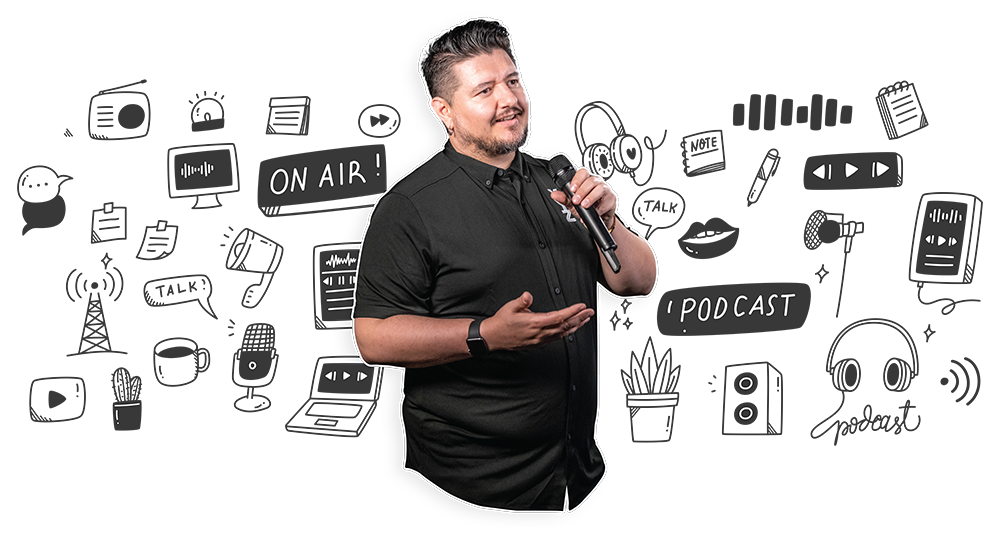
Develop an Effective Messaging Strategy
What message will you use to engage potential customers and what platforms will you use? Consider the problems your potential customers are facing. What Benefit are you providing?
Understanding your audience’s daily challenges is pivotal for effective marketing. Knowing these problems allows you to position your product or service as a solution, thereby directly addressing their needs and fostering a deeper connection with them. In the competitive landscape of home services, empathizing with your audience and providing a solution to their everyday hurdles can differentiate you from other businesses.
It enables you to craft marketing messages that resonate with them on a personal level, fostering trust and loyalty. Not only does this understanding help in retaining existing customers, but it also aids in attracting potential ones who are seeking solutions to the same challenges. Knowing this is essential for your marketing plan, ensuring your messaging aligns with your audience’s pain points and your business remains their preferred option for home services.
Crafting a marketing message that resonates with potential customers can be challenging. However, developing an effective messaging strategy is crucial to driving sales and building a loyal customer base. To do this, it’s important to consider the problems your potential customers are facing and the benefits that your product or service can offer. Keep your communication short and concise, focusing on how your solutions can benefit them.
As for platforms, choose those that align with your target audience. Whether it’s social media, email marketing, or a combination of both, your messaging should be consistent across all platforms to ensure maximum impact. With a strategic approach to your messaging, you can successfully engage potential customers and build lasting relationships.
If you’re finding it challenging to build your marketing plan or understand your potential customers’ issues and the benefits your business brings to them, we’ve got the perfect solution for you. Download our AI-powered Marketing Plan Builder today! This innovative tool harnesses the power of artificial intelligence to simplify the planning process and help you identify your customers’ pain points and the unique benefits your service offers. Don’t struggle in silence; let our AI do the heavy lifting for you!

Clear communication of the benefits your service provides is essential to capture the interest of your ideal customer. It’s not enough to simply mention what your product or service does; you must clearly articulate how it can improve their life, solve their problems, or fulfill their needs.
This goes beyond listing features or specifications – it’s about speaking to the heart of their concerns and demonstrating how you can deliver a solution. For example, if your service is a home cleaning service, you don’t just provide cleaning; you offer peace of mind, a clean and comfortable home, and more free time for your customers to do what they love.
By communicating the benefits in this manner, you make your service more relatable and appealing, increasing the likelihood of conversion and customer retention. This clarity in communication should permeate all your marketing efforts, ensuring your audience understands the unique value of your services.
Understanding your ideal customer’s issues and presenting your solutions as the answer to these problems is the cornerstone of your marketing message. It’s not just about selling a service or a product; it’s about selling a solution to your customer’s problem.
For instance, if your ideal customers are busy professionals who struggle to keep their homes clean because of their demanding schedules, then your home cleaning service isn’t just a cleaning service. It’s a solution that offers them more free time, less stress, and a pleasant, clean home to return to after a long day at work.
This is the kind of marketing message that resonates with potential customers because it directly addresses their needs and demonstrates that you understand their challenges. So, always keep in mind: your solutions are not merely services or products, they are answers to your ideal customers’ problems, and that should be the core message of your marketing.
The ability to succinctly communicate the problems you solve and the benefits you bring in a condensed format like bullet points is crucial. This method ensures clarity and enhances the readability of your value proposition, making it easier for potential customers to quickly grasp what you offer. For instance, if you run a roofing service, your bullet points might look like this:
- Problem solved: Lack of skill to install a new roof
- Our solution: Professional and efficient roof installation
- Benefit: More free time for customers, peace of mind, and a clean, comfortable home
By encapsulating the core of your services into bullet points, you make your messaging easily digestible and immediate. This strategy can be especially effective in platforms where users skim through content, such as websites or social media, significantly increasing the chances of resonating with potential customers and leading to conversions.
Unlocking Customer Action: Addressing Pain Points and Desires
Addressing your ideal customer’s pain points and desires will cause them to take action. Define what action they will take
In business, addressing your ideal customer’s pain points and desires is essential for turning them from mere prospects into loyal customers. This concept is a cornerstone of any effective marketing plan. By identifying the motivations of your target audience and tailoring your messaging and offers accordingly, you ignite a sense of urgency that drives immediate action. A carefully crafted call to action that perfectly aligns with your customer’s pain points and desires can be incredibly effective. When you focus on meeting your customers’ needs and helping them solve their problems, they’re more likely to respond and take action.
If you’re finding it challenging to build a marketing plan or struggle to identify your ideal customer’s pain points and desires, we have a solution for you. Download our Artificial Intelligence Marketing Plan Builder. This intuitive tool leverages advanced AI technology to simplify and optimize your marketing planning process. It not only helps in formulating a strategic marketing plan but also provides insightful data to aid in understanding your customer’s needs and desires. Empower your marketing efforts with our AI tool and create a marketing plan that truly resonates with your target audience.
Understanding your ideal customer’s pain points is a crucial aspect of effective marketing. However, sometimes, these pain points may not be directly apparent or clear. To uncover them, you can do thorough market research, like surveys, interviews, or focus groups with your target audience. These tools can provide valuable insights into their challenges, needs, and wants. Another method is through social listening.
By tracking conversations about your industry or brand on social media, you can gain an understanding of common issues or needs that your audience is facing. Online reviews and feedback are also a treasure trove of information, where customers often freely share their problems and experiences. By taking the time to understand and empathize with your customers, you can set the tone of your message to address issues, positioning your product or service as the ideal solution.
Understanding your ideal customer’s desires and crafting your communication to appeal to these aspirations is key to engaging and converting prospects. Just as you identify your customers’ pain points, it’s equally vital to unearth their desires, dreams, and aspirations.
These can range from tangible goals like saving time or money, to intangible ones like achieving peace of mind or enhancing their social status. Only then can you align your messaging to effectively show your customers how your product or services can help them realize their aspirations? For instance, if your customers desire more free time, emphasize how your home cleaning service can give them back hours in their day.
If they aspire for a stress-free life, highlight how your service can take one major task off their plate, reducing their daily stress. This alignment between your communication and your customers’ desires creates a powerful psychological impact, making your brand more appealing and increasing the likelihood of conversion. It’s the process of moving from simply addressing needs and solving problems to fulfilling customers’ desires that makes marketing communications truly compelling.

In essence, a marketing plan is simply a structured path of communication with your ideal customers. It’s not just about showcasing your products or services, but about articulating how your offerings solve their problems and fulfill their desires. Each element of the plan, from understanding the customer’s pain points and aspirations to crafting compelling messages that resonate with them, to defining an effective call to action, forms a chain of communication.
This chain ensures the customer feels understood and valued, which in turn, builds trust and fosters a strong relationship with your brand. When implemented effectively, a marketing plan does more than just promote sales—it builds a community of loyal customers who see your brand as the answer to their needs and the path to achieving their aspirations.
In marketing, the importance of a compelling call-to-action (CTA) cannot be overstated. CTAs serve as the tipping point that turns a potential customer into a committed one. They’re the final push that compels your audience to act based on the desires you’ve identified and catered to in your messaging. CTAs should be designed to resonate with your customers’ aspirations. For instance, if your customers desire more time, your CTA might be, “Claim your peace of mind now!”
If their desire is a stress-free life, your CTA might be, “Start living stress-free today!” By aligning your CTAs with your customers’ desires, you not only make your offering more appealing but also create a sense of urgency that speaks to their emotional needs and motivates them to take immediate action. Remember, a CTA is not just a button or closing line— it’s the key component that links your audience’s needs and desires to your solutions, making them feel that by acting, they’re moving one step closer to fulfilling their aspirations.
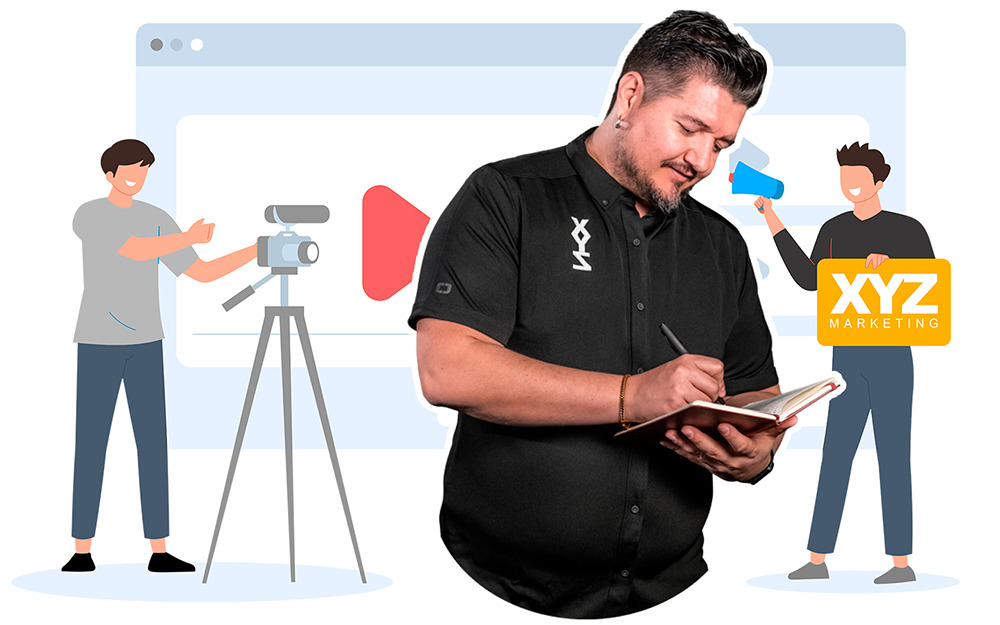
What’s your unique selling proposition and value statements?
When creating a marketing plan, it’s important to clearly define your unique selling proposition and value statements. Your unique selling proposition is what sets you apart from your competitors, while your value statements highlight the benefits your products or services provide to customers.
These statements should be communicated clearly and consistently throughout all of your marketing efforts, from your website to your social media posts. By effectively communicating your unique selling proposition and value statements, you can attract new customers and retain existing ones, ultimately leading to business growth and success.
If you’re finding it challenging to create a marketing plan, or struggling to articulate your unique selling proposition and value statements, we’ve got you covered. Download our Artificial Intelligence Marketing Plan Builder now! This cutting-edge tool leverages AI technology to streamline the process of building an effective marketing plan and helps you define your unique selling proposition and value statements with precision. With our AI Marketing Plan Builder at your disposal, you’ll have a powerful ally in your quest for business growth and success.

Developing a unique selling proposition (USP) can sometimes be challenging, especially when you’re not exactly sure what it entails. However, it’s not a hard task.
Start by thoroughly evaluating what you offer as a business—your products or services—and pinpoint what makes them unique. What makes you better or different from anyone else in your market? This could be superior quality, a novel feature, exceptional customer service, or even a unique brand personality. Then, consider your customers’ needs and desires.
Which of these needs are currently unmet by your competitors? How does your product or service meet these needs in a unique way? The intersection of what you do uniquely well and what your customers need (and aren’t getting elsewhere) is your USP. It’s the golden nugget that separates you from the crowd and makes your offerings more attractive to your target audience.
Remember, your USP doesn’t have to be a grand, groundbreaking revelation. Sometimes, small distinctions can make a significant impact. The key is to ensure that your USP clearly and effectively communicates your unique value to your customers, making their decision to choose you over your competitors an easy one.
Just like crafting a unique selling proposition, building your value statements may seem daunting, especially if you’re unsure about what they should encompass. But it’s not an insurmountable task. Value statements articulate the unique values and benefits that your product or service offers to customers.
They answer the question, “What value will customers gain from choosing you over your competitors?” To create compelling value statements, start by identifying the core benefits that your product or service provides. These could range from tangible features, such as speed, reliability, or cost-effectiveness, to intangible benefits like peace of mind, time-saving, or enhanced social status. Then, consider your customers’ aspirations and how your offerings align with these.
For instance, if your customers desire more free time, your value statement could be, “Our services give you more hours in your day to do what you love.” If they want to reduce stress, your value statement could be, “We take the hassle out of your daily tasks, so you can enjoy a stress-free life.”
Remember, your value statements should be specific, clear, and customer-focused. They should not only highlight the unique values you offer but also resonate with your customers’ needs and desires, making it clear why choosing your brand will bring them closer to realizing their aspirations.
In the grand scheme of your marketing plan, your unique selling proposition (USP) and value statements serve pivotal roles. They form the core of your messaging and give your potential customers clear, compelling reasons to choose your product or service over others.
Once you’ve established your USP and value statements, they should be integrated throughout all elements of your marketing plan. For instance, they should shine through in your content marketing, social media posts, email campaigns, and even in your SEO strategy. Your ads should highlight your USP and demonstrate the unique benefits outlined in your value statements.
Your landing pages should echo these same points, ensuring a consistent message that effectively communicates your brand’s value. In essence, your USP and value statements, by clearly articulating your brand’s uniqueness and the value it provides, act as the golden thread that ties all aspects of your marketing strategy together, creating a cohesive narrative that attracts and engages your target audience.
In order to communicate your unique selling proposition and value statements in a way that even a child could understand, think of your business as a superhero. Your unique selling proposition is your superhero’s power—what makes them special and different from all the other superheroes? It could be that they’re the fastest, the strongest, or the most helpful. Your value statements are the good deeds your superhero does with their unique power, like saving people in danger or helping them solve problems.
Now, let’s use an extreme example to bring the point across, say you run a pizza shop. Your unique selling proposition could be “We make the cheesiest pizzas in town!” and a value statement could be, “Our pizzas make your parties more fun!” These simple statements highlight what makes your pizza shop different and the benefits it provides, in a way that even a child can understand and appreciate.
What’s the easiest way to communicate what you do in 3 easy-to-take steps? How can people relate to that? What story can you tell that will make relate?
The best way to help you understand this is by walking you through an example.
The easiest way to communicate what you do in three simple steps is by adopting clear, relatable, and compelling storytelling. Firstly, explain what you do using simple, straightforward language. To stick with our extreme example, “We create exceptionally cheesy pizzas.” Secondly, describe how you do it, focusing on the elements that make you unique. For instance, “We use a secret family recipe and grade-A cheeses to make our pizzas the cheesiest in town.” Lastly, share the impact of what you do, in terms of the value or benefit to the customer. For example, “Our pizzas turn ordinary parties into unforgettable celebrations.”
To make this relatable, weave these steps into a story. Picture John, a father who wants to throw an unforgettable birthday party for his son. John chooses your pizza because of its unique selling proposition and value statements. At the party, the kids can’t get enough of the cheesy pizza, making John’s son’s birthday the talk of the neighborhood. This story does more than just tell— it shows the audience the real-world value of what you do, making it easier for them to relate and see themselves in the narrative.

If you’re finding it challenging to construct your marketing plan or if storytelling seems like a complex puzzle, don’t worry—we’ve got just the solution for you. Download our Artificial Intelligence Marketing Plan Builder today! This innovative tool can assist you in developing a robust marketing plan and simplifying your storytelling process, making the journey of working with us as straightforward as 1-2-3. It’s designed to empower you to communicate your unique value proposition effectively and weave compelling narratives that resonate with your customers.
The power of storytelling in marketing is undeniable. It’s more than a strategy; it’s a compelling way to engage with your potential customers. Storytelling allows you to weave your USP and value statements into narratives that resonate with your audience at an emotional level, making your brand unforgettable. Stories humanize your brand, making it relatable and real.
They illustrate your value propositions in practical, real-world scenarios, helping your audience visualize the benefits of choosing your product or service. In essence, stories allow your audience to experience the value your business provides, rather than just read about it. A well-crafted story can inspire, captivate, and persuade, turning potential customers into loyal brand advocates. So, when crafting your marketing content, always remember this golden rule: facts tell, but stories sell.
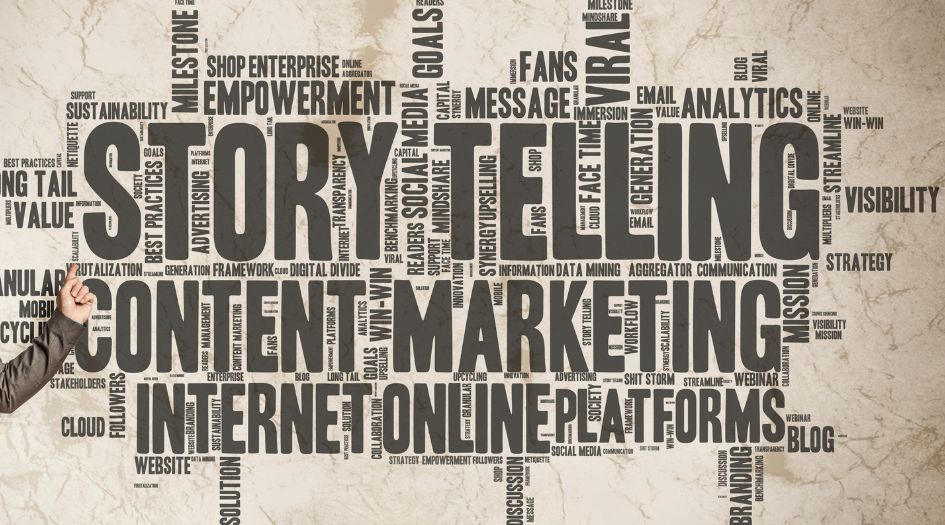
Even if you’re skeptical about embracing storytelling in your marketing efforts, it’s crucial to keep an open mind. Marketing paradigms are continually evolving and storytelling has proven to be an impactful strategy in today’s dynamic landscape. If you aren’t ready to fully integrate it into your marketing toolkit, consider it as an experimental approach to supplement your existing strategies. The power of narrative could yield unexpected outcomes and offer fresh insights into your target audience’s preferences and buying behavior. Moreover, storytelling has a unique capacity to connect on a human level, which could result in stronger relationships with your customers. So, while the idea may seem daunting or unfamiliar, keeping an open mind to storytelling might just be the catalyst that propels your brand to unprecedented heights.
Storytelling taps into the emotional core of your audience, creating a deep and lasting connection between them and your offered service. Through the power of narrative, your service transitions from an abstract concept to a relatable experience, evoking emotions and responses that mere facts and features cannot.
When you paint vivid pictures of real-life scenarios where your service solves problems or enhances experiences, your audience subconsciously relates to these situations. They may feel the joy of a father throwing an unforgettable party for his son, the relief of a problem solved, or the excitement of an enhanced experience, all brought about by your service.
This emotional connection imbues your service with value beyond its functional attributes, nurturing a relationship between your brand and your audience that is rooted in emotion and experience rather than mere transactions. In fact, research shows that customers who feel emotionally connected to a brand are significantly more likely to demonstrate loyalty and advocacy. Thus, storytelling fosters emotional connections that not only influence purchase decisions but also foster long-term customer loyalty.
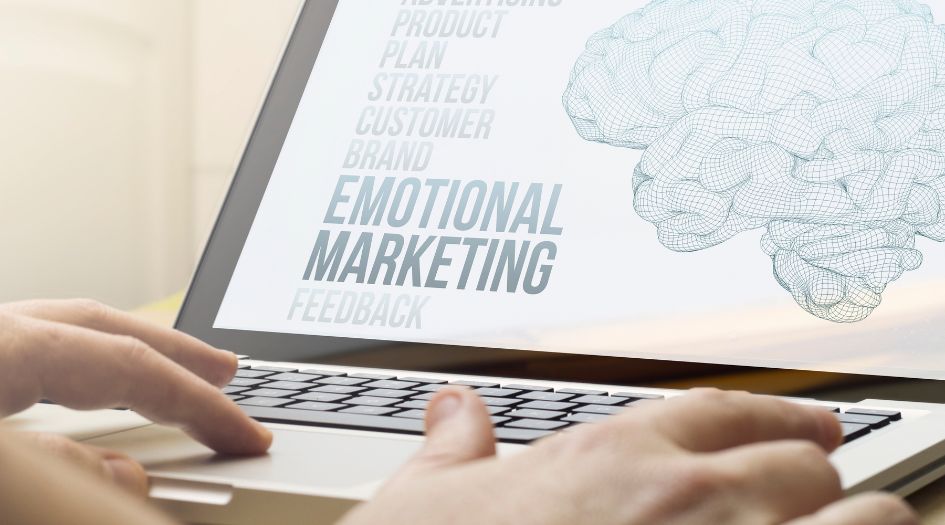
While logic plays a role in our purchasing decisions, it’s our emotions that often have the final say. Many studies have shown that our emotions significantly influence, and in many cases even determine, our purchasing decisions. For instance, consumers are more likely to purchase products or services that elicit positive emotions or help them avoid negative ones.
This is known as emotional buying and it’s a powerful tool that marketers can leverage to drive engagement and sales. When you tell a compelling story that resonates emotionally with your audience, you’re not just selling a product or service; you’re offering a solution to their needs, an answer to their problems, or a way to fulfill their desires. This emotional connection makes your brand more appealing and persuasive, increasing the likelihood of a purchase. Therefore, embracing storytelling in your marketing strategy is more than just a trend; it’s a tried-and-true way to tap into the emotional core of your audience and influence their purchasing decisions.
You will want to stack the odds in your favor. Rather than overwhelming potential customers with dry facts and feature lists, narratives allow you to engage their emotions, making your brand more memorable and appealing. The power of emotional buying cannot be understated. When customers feel emotionally connected to your brand, they are more likely to make a purchase and become loyal advocates for your products or services.
But it’s not enough to just tell a compelling story; you also have to make doing business with you easy. A seamless customer experience, from the first point of contact to post-sale service, can significantly enhance the emotional connection your customers have with your brand. By integrating storytelling into your marketing strategy and prioritizing customer ease, you can tilt the marketing odds in your favor, attracting more customers and building longer-lasting relationships.

What questions do people have before hiring you? What makes people want to work with you? Do you offer a guarantee?
As a professional in any field, there are always frequently asked questions that people have before deciding to work with you. When it comes to my business, the most common queries I receive relate to my marketing plan and how I can help clients achieve their desired outcomes. I strive to build a solid and transparent strategy tailored to each individual client’s objectives.
This is what makes people want to work with me – my ability to create a bespoke approach that meets their needs. Furthermore, I offer a guarantee and warranty on all my services, which provides my clients the peace of mind they need when investing their time, energy, and money into my business.
If you’re still finding it challenging to build a robust marketing plan or if you’re struggling with frequently asked questions, guarantees, or warranties, we’ve got you covered. Download our Artificial Intelligence Marketing Plan Builder today. This intuitive tool offers a comprehensive roadmap to crafting a personalized and effective marketing plan tailored to your business needs. It also provides guidance on handling common queries and providing guarantees or warranties that resonate with your customers. So, take the next step towards marketing success and let our AI-powered tool guide you through the process.
The saying ‘a confused mind never buys’ is particularly prescient in marketing. Clarity, after all, is the foundation upon which trust and, subsequently, purchasing decisions are built. A potential customer’s questions are a manifestation of their need for clarity, and if left unanswered, these questions can sow seeds of doubt and confusion.
Uncertainty can lead to hesitation, and this often translates to lost sales opportunities. Hence, it is of utmost importance that we address our potential customers’ queries promptly and comprehensively.
By offering clear, concise, and convincing answers, we can dispel any confusion and guide our prospects toward a confident buying decision. This not only paves the way for a successful sale but also lays the groundwork for a sustainable and mutually beneficial customer relationship.
Risk reversal is a key strategy in sales and marketing that involves eliminating or reducing the perceived risk of purchasing a product or service. The less risk involved, the more likely a customer is to make a purchase.
One of the most effective ways to implement risk reversal is through a guarantee. A guarantee is a powerful tool that provides assurance to customers about the quality of your product or service. It offers a promise that if your product or service does not meet their expectations, they can seek a refund or a replacement.
This makes the buying decision easier as it transfers risk from the customer to the business. A well-structured guarantee can address customer apprehensions, build trust, and increase confidence in your brand, making it a potent element of your marketing strategy. When potential customers know that their purchase is risk-free, they are more likely to commit to the purchase, thus driving sales and boosting profitability.
Incorporating your warranty or guarantee into your marketing plan is a strategic move that can substantially bolster your brand’s trustworthiness and appeal. Make it a prominent feature in your advertising and promotional efforts.
Your guarantee serves as a testament to the quality and reliability of your products or services, assuaging any potential fears your customers might have about taking a risk. Advertise this guarantee on your company’s website, social media platforms, and any other marketing materials you may have. Ensure it’s communicated clearly and prominently—this isn’t a feature to be hidden in fine print.
Encourage your sales team to discuss the guarantee with potential customers as it can be a major selling point. Remember, a well-advertised warranty not only highlights your confidence in your offerings but also decreases the perceived risk for your customers.
By making your guarantee an integral part of your marketing strategy, you create a more enticing proposition for potential customers, which can ultimately lead to increased sales and customer loyalty.

What’s your Core Message and how will you communicate it in ads, videos, lead magnets, and email campaigns?
In today’s digital age, having a Marketing Core Message is crucial to the success of any business marketing plan. Identifying this message and communicating it effectively in various marketing channels such as Ads, Videos, a Lead Magnet, and Email campaigns is essential to establish a strong brand identity. A powerful core message must clearly communicate your brand’s mission, vision, and values to set you apart from competitors. Utilizing catchy phrases, attention-grabbing graphics, and storytelling techniques will ensure that your message resonates with your target audience and drives them toward action. By implementing a thoughtful and cohesive marketing strategy, businesses can effectively reach their audience, grow their brand, and achieve their overall goals.
Take control of your marketing strategy with our Artificial Intelligence Marketing Plan Builder. This dynamic tool utilizes cutting-edge AI technology to help you construct a marketing plan that’s tailored to your unique business needs. Not only does it streamline the planning process, but it also empowers you to create a plan that resonates with your target audience, optimizes your resources, and drives your business toward your desired outcomes. Don’t just plan—plan smarter with our AI Marketing Plan Builder.
Download today and begin the journey towards a more compelling and effective marketing strategy.

Generating a core message might feel intimidating, especially if you’re uncertain about its significance. Essentially, your core message is the main takeaway you want for your audience after interacting with your brand. It’s a representation of your brand’s values, mission, and unique selling points, all rolled into one concise statement.
When you’re unsure of what your core message should be, start by reflecting on what your business stands for and what makes it unique. Consider your value proposition – what makes your products or services different, and why should customers choose you over competitors? It can also help align your core message with your target audience’s needs and values.
Remember, your core message isn’t just about you—it’s about how you can serve your customers. Crafting a core message that resonates with your audience can help differentiate your brand and drive your marketing strategy. If you’re still having trouble, don’t hesitate to seek external help – a professional marketer or business consultant can provide valuable insights to clarify your brand’s core message.
Creating a memorable and easily understood core message is crucial to maximizing its impact. Your core message should be simple, yet powerful—think of it as your brand’s elevator pitch. It should be able to convey the essence of your brand in a few compelling sentences.
Use clear, concise language to prevent confusion or misinterpretation. Avoid industry jargon and complex terms that might alienate potential customers. Instead, use everyday language that resonates with your target audience. Remember, the more relatable and memorable your core message is, the easier it is for anyone to share it with others.
This ‘word-of-mouth’ promotion can be incredibly powerful and cost-effective. Think of your core message as a viral tweet—it should be short, punchy, and shareable, sparking interest and conversations. Reiterate this core message consistently across all your communication channels to reinforce brand identity and recall.
Utilizing your core message in your Facebook and Google Ads is a strategic move that can significantly enhance your brand visibility and customer engagement. Start by framing your ads around your core message.
This not only ensures consistency across all marketing platforms but also resonates strongly with your target audience.
For Facebook Ads, consider weaving your core message into compelling stories. Facebook’s dynamic ad formats such as carousels, video ads, and image ads provide a perfect canvas for storytelling. Use these formats to convey your core message in an engaging and memorable way.
On Google Ads, integrate your core message into your ad headline and description. Aim for concise yet impactful wording that clearly communicates the unique value your brand offers.
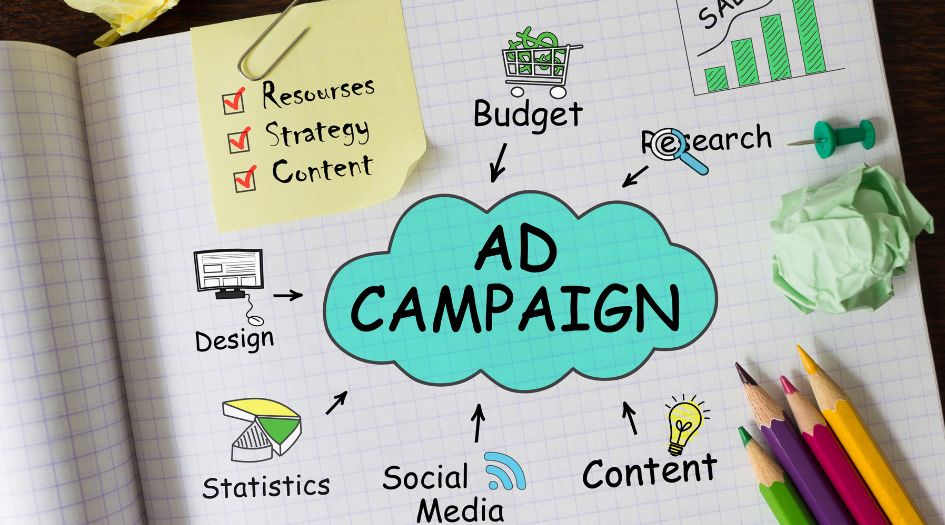
Remember to align your core message with keywords relevant to your brand and audience needs. This approach not only improves your ad’s visibility in search results but also ensures it resonates with the right audience. By incorporating your core message in your Facebook and Google ads, you’ll be able to reinforce your brand, increase ad relevance, and ultimately drive higher conversion rates.
Incorporating your core message into your video content across your entire marketing plan can significantly enhance your brand perception and audience engagement. Video is a powerful medium for storytelling and can visually convey your core message in a way that is both engaging and memorable.
Whether it’s promotional videos, product demos, customer testimonials, or educational content, ensure your core message is at the forefront of every video you produce. Your core message should guide the narrative of your video, shaping the script, the visual elements, and even the tone and pace of the dialogue.
Remember, consistency is key. Ensure your core message is clearly and consistently communicated in every video, irrespective of its purpose or platform.
This leads to a cohesive brand image, making your brand easily recognizable across various platforms. Furthermore, end each video with a strong call to action that aligns with your core message, prompting viewers to engage with your brand in a way that resonates with your core values and objectives.
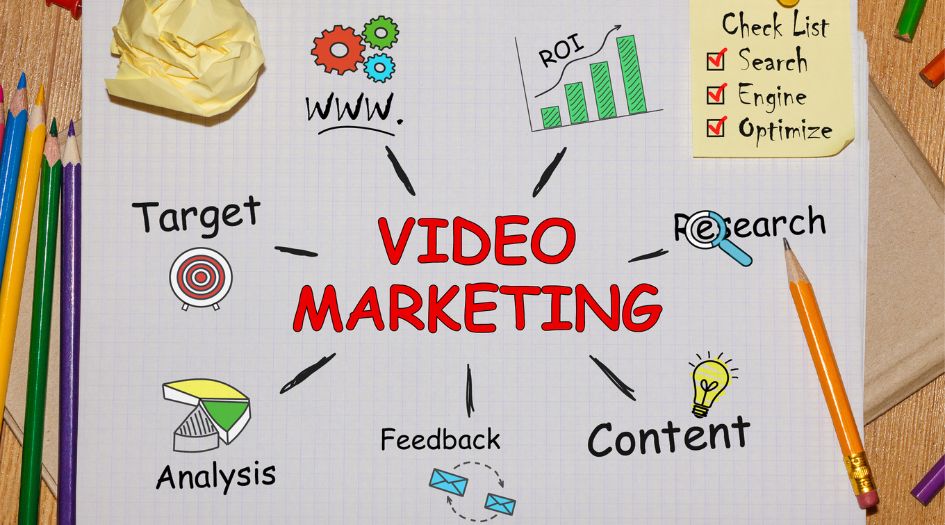
Integrating your core message in your lead magnet is a highly effective way to attract and engage potential customers. A well-crafted lead magnet that embodies your core message can serve as a powerful representation of your brand and its unique offerings.
This could be an e-book, a free trial, a discount coupon, or any other incentive that provides value to your audience. The content of your lead magnet should not only educate and inspire your audience but also consistently reinforce your core message.
This way, every interaction potential customers have with your brand, even the indirect ones, contributes to a unified brand perception shaped by your core message. By strategically incorporating your core message into your lead magnet, you can ensure that every potential customer who interacts with it gains a clear understanding of your brand’s mission, values, and unique offerings.
A lead magnet, in the context of a marketing strategy, is a valuable tool designed to attract potential customers by offering them something of value in exchange for their contact information. This could be a free guide, a discount, a webinar, or any other valuable resource that is relevant to your target audience.
Lead magnets serve two main purposes in a marketing plan. First, they help businesses build their email list, providing a direct line of communication with potential customers. Second, they establish brand credibility and trust, showcasing the brand’s expertise and providing value to potential customers before they even make a purchase.
By providing a high-value resource, lead magnets attract potential customers, capture their contact information, and move them further down the sales funnel, ultimately driving conversions and promoting customer loyalty.”
Using your core message in your email campaigns is another effective way to strengthen your brand identity and build a deeper connection with your audience. Each email you send is an opportunity to reinforce your brand’s core message, thereby fostering consistency and familiarity. Your core message should be the backbone of your email content, whether it’s a promotional email, a newsletter, or a personal outreach.
Carefully craft your email subject lines and body content to echo your core message, creating an instant brand recall whenever your audience sees an email from your brand. Personalization and relevancy are key here; make sure each email is tailored to the receiver’s needs while still aligning with your core message. This combination of personalization with a consistent core message can significantly boost open rates and engagement in your email campaigns.

Email campaigns are a vital component of the marketing plan, playing a significant role in influencing the customer’s decision-making process. They serve as a direct line of communication with your audience, allowing you to deliver personalized content, offers, and updates straight to their inbox.
This consistent engagement helps keep your brand top-of-mind, fostering customer loyalty and encouraging repeat purchases. Additionally, email campaigns provide valuable insights into customer behavior. By tracking open rates, click-through rates, and conversions, you can gain a deeper understanding of your audience’s interests and preferences, enabling you to tailor future campaigns more effectively.
Overall, the role of email campaigns extends beyond mere promotion – they are a powerful tool for building relationships, guiding customers through the sales funnel, and ultimately driving conversions.
Navigating the Path Forward: Crafting Your Core Message and Reaching Your Audience
To wrap it all up, it is essential to create an effective marketing strategy that takes into account who your target audience is and how you should communicate with them. You want to make sure that your message conveys the benefits that you offer, as well as showing potential customers why they should choose your product or service over alternatives.
Have a unique selling proposition with a clear value statement in place so you can easily point people to it. Additionally, ask yourself: What questions people will have before potentially hiring you? What makes them want to do business with you and are there any guarantees included?
Finally, carefully consider how you communicate your core message in different areas including ads, videos, lead magnets, and email campaigns. Ultimately, all of these elements make up your marketing plan and perception of communication so enlisting help from an experienced marketing agency can make all the difference in success.
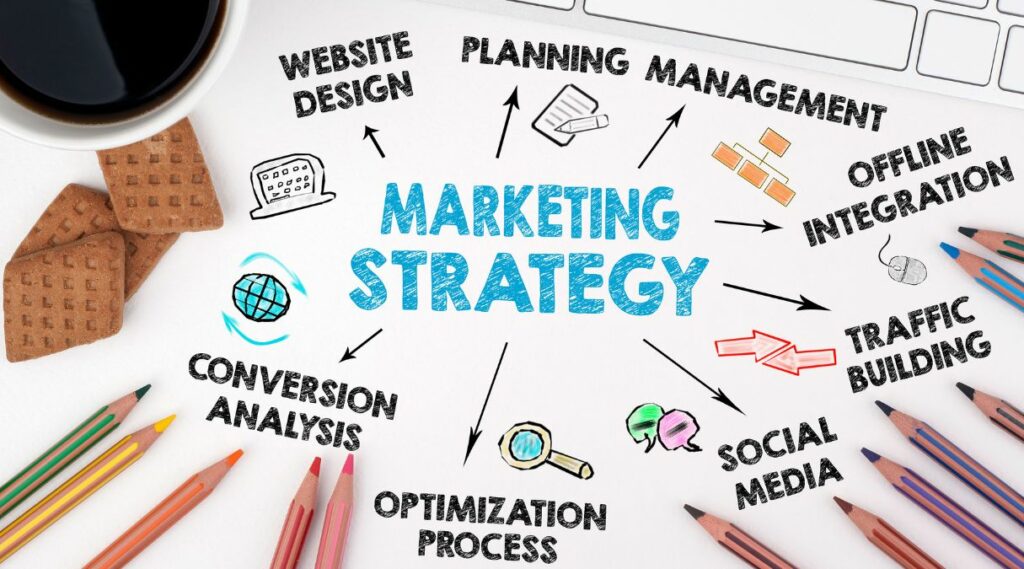
Once you’ve meticulously shaped your core message, and integrated it into your video content, lead magnets, and email campaigns, the remaining task is to determine the platforms through which you’ll broadcast your message.
This is relatively straightforward, as your choice will largely depend on where your target audience spends most of their time. You might opt for social media platforms like Facebook or Instagram, professional networks like LinkedIn, or even your own website and blog.
You may also consider utilizing SEO and PPC campaigns to increase your visibility on search engines. Regardless of the platforms you choose, what’s crucial is that they enable you to reach, engage, and convert your audience effectively.
Though this might seem daunting, don’t worry, you can absolutely do it! Remember, the key is to remain consistent and authentic in your communication across all platforms. If at any point you feel overwhelmed, remember that we’re here to assist.
Our experienced marketing team is prepared to assist you in creating and implementing a successful marketing strategy that aligns with your brand’s message and reaches your target audience. We’re just a call or an email away, ready to help you navigate the fascinating, ever-evolving world of digital marketing.
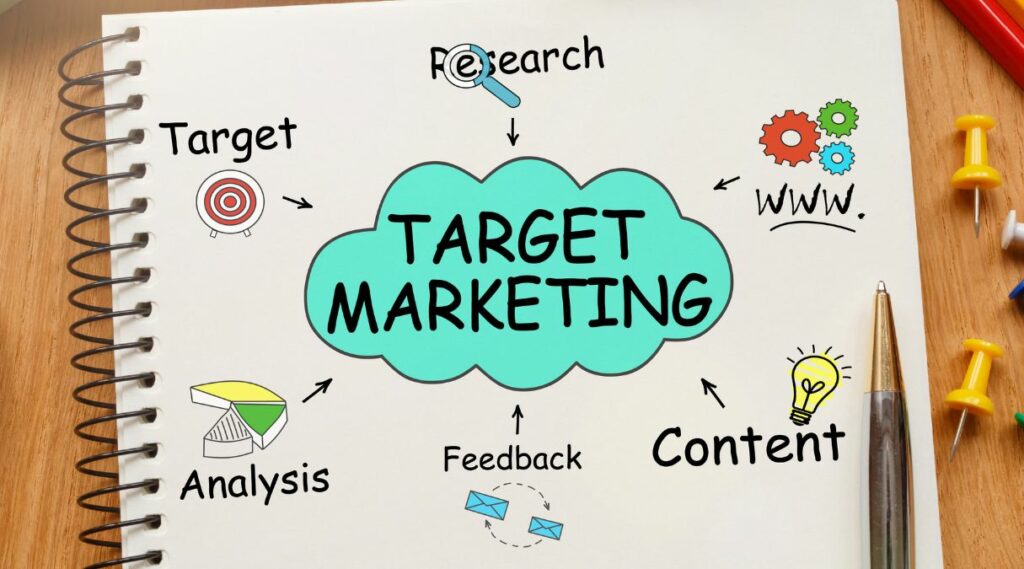
In the face of these complexities, you may find it challenging to shape and deliver your core message effectively across each component of your marketing strategy. This is where our marketing agency steps in.
We specialize in creating, implementing, and managing comprehensive marketing plans that resonate with your audience reinforcing your brand’s core message. With our team of seasoned marketing experts, we can help you navigate the complexities of crafting compelling ads, engaging videos, effective lead magnets, and personalized email campaigns.
We understand the intricacies of effective communication and possess the knowledge to guarantee that your marketing endeavors remain coherent, precise, and influential. When you delegate your marketing requirements to us, you can concentrate on your core strengths – managing your business – while we take care of the rest.
Don’t wait any longer; hire us today to enhance your brand’s messaging and expand its presence in the competitive business environment.








